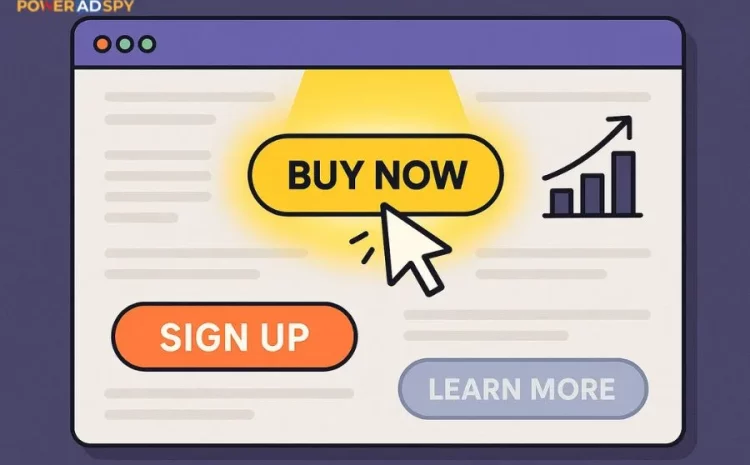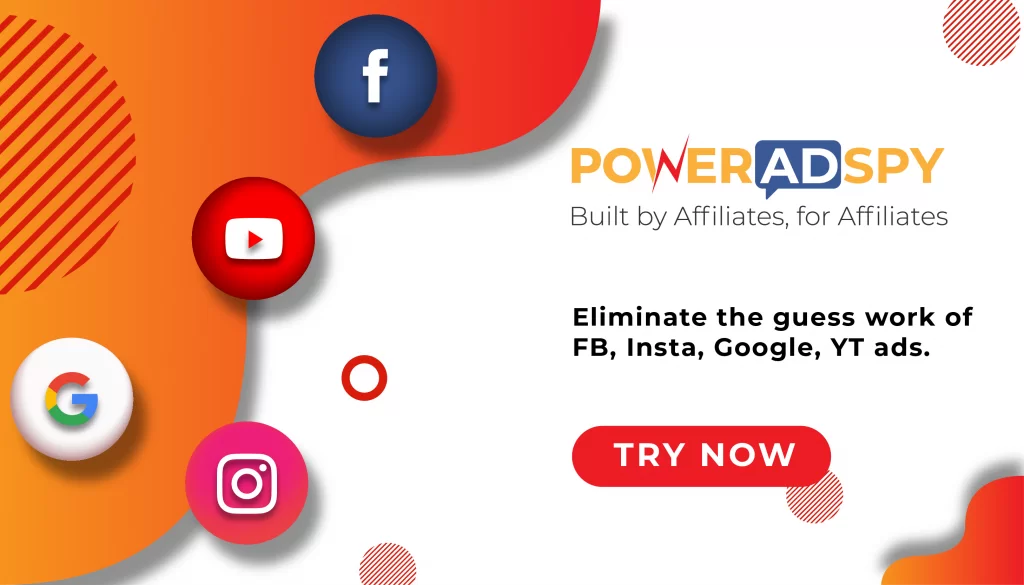Call to Action Examples and Tips to Skyrocket Conversions
Think of your website or ad as a stage. You’ve got the spotlight, the audience is watching, and now it’s time to tell them what to do next. That’s exactly where call to action examples come in. A strong CTA is like a gentle nudge that guides people toward the action you want, whether that’s signing up for a newsletter, making a purchase, or simply clicking to learn more.
The tricky part? Not all CTAs are created equal. Some get ignored, while others spark clicks and conversions instantly. The difference often lies in how they’re worded, where they’re placed, and how they resonate with your audience.
In this blog, we’ll break down the best call to action examples you can use across websites, ads, and social media. You’ll also see tips on how to write CTAs that don’t just look good, but actually drive results. By the end, you’ll have a toolkit of strategies and examples you can use to make your CTAs impossible to ignore.
You can listen to our Podcast here,
What Is a Call to Action?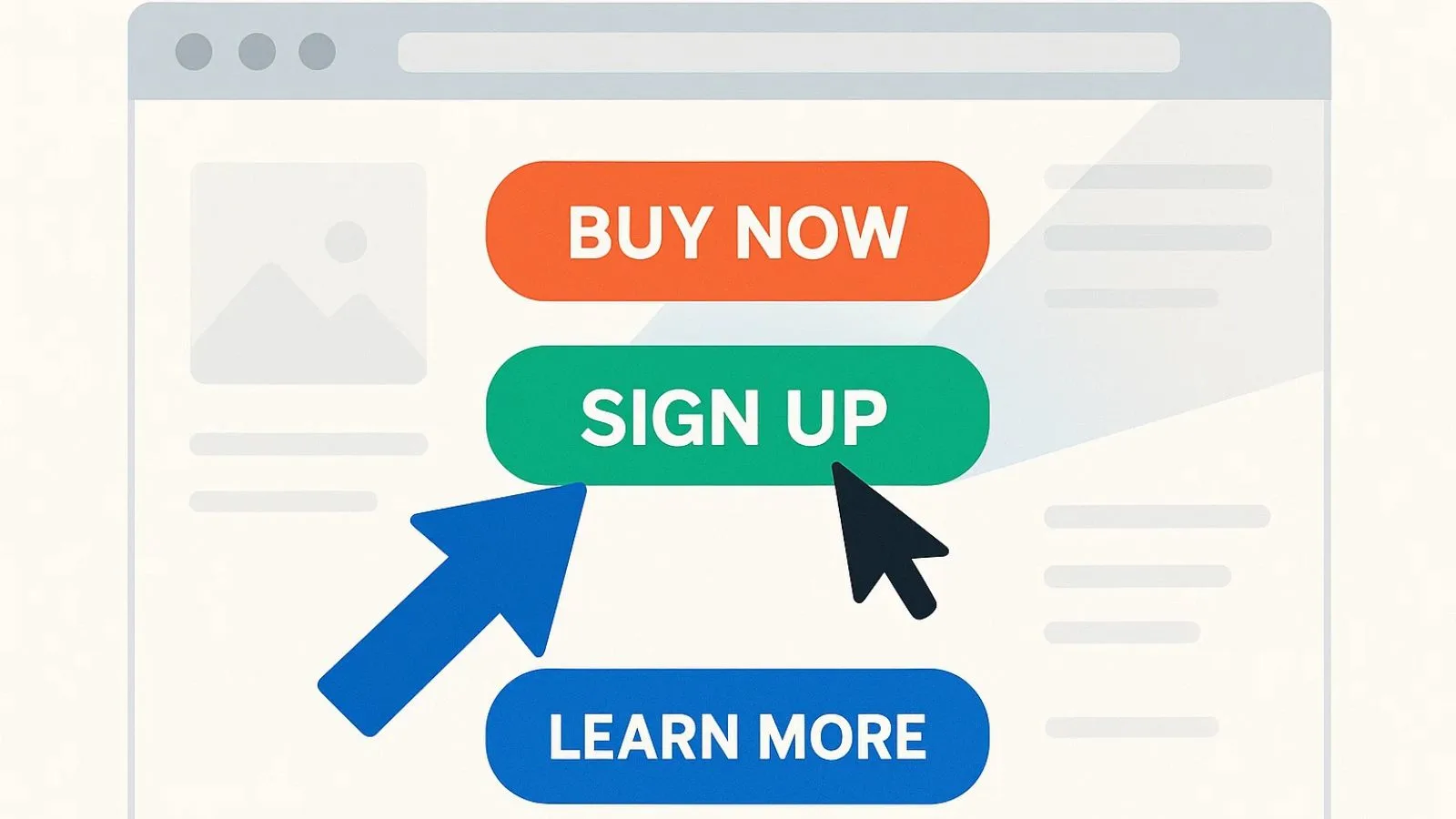
A call to action (CTA) is simply a prompt that encourages your audience to take the next step. A CTA can be as direct as “Buy Now” or as casual as “Learn More.” Simply put, it guides people from being interested to taking action.
Without one, your visitors might scroll, skim, or even leave without engaging further.
The most effective call to action examples are short, clear, and compelling. They don’t confuse people with too many words; they tell them exactly what to do. Think of a CTA as your digital signpost: it guides users in the right direction, whether that’s clicking a button, signing up for a free trial, or engaging with your content on social media.
In marketing, CTAs aren’t just nice-to-have elements. They’re essential. Every landing page, ad, and social media post needs one. Without a clear CTA, even the most polished design or persuasive copy can fall flat.
Key Elements of Effective CTAs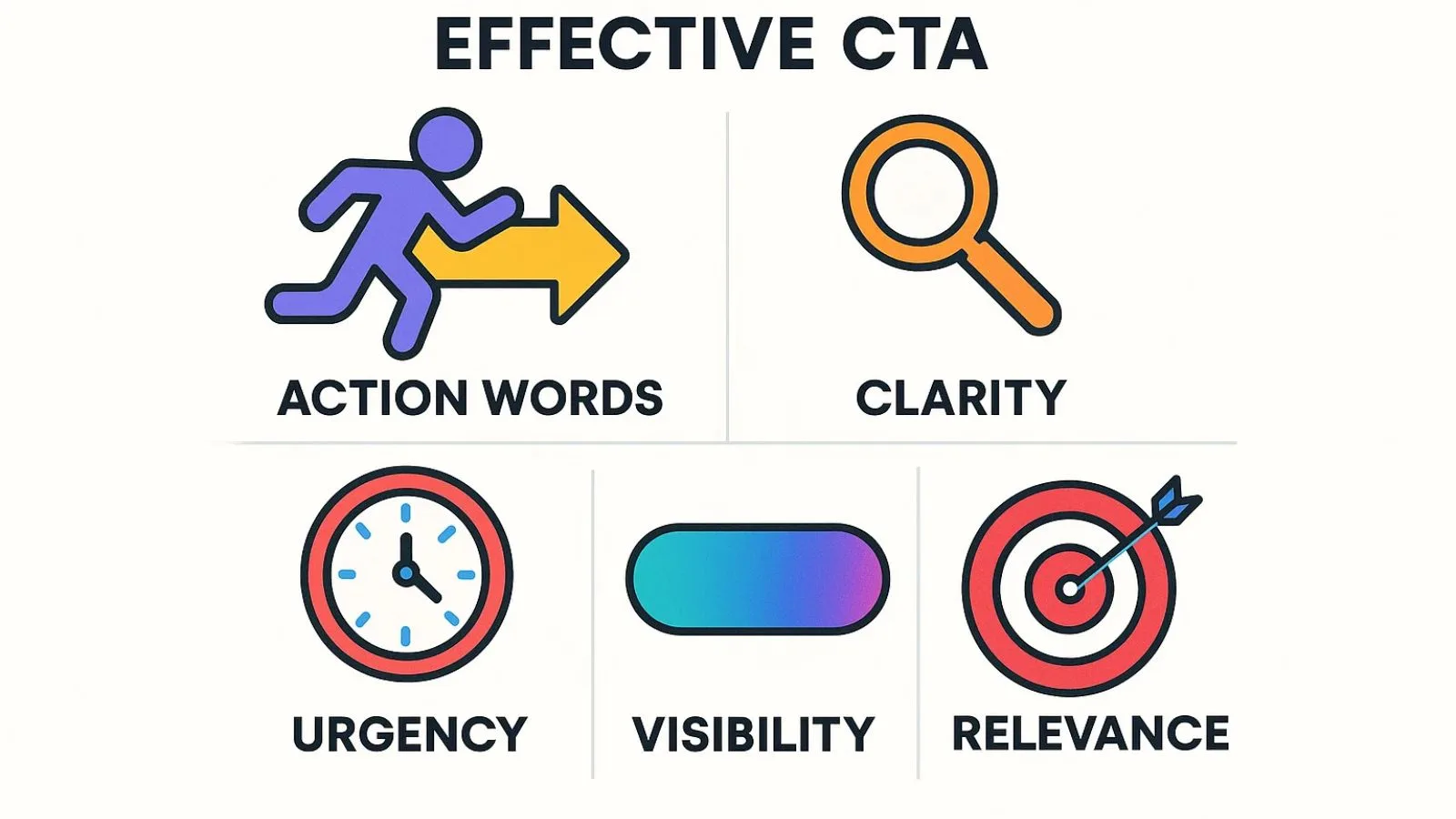
Crafting a call to action isn’t about tossing a button on a page and hoping for clicks. The strongest call to action examples share a few key ingredients that make them irresistible:
1. Action-Oriented Language
A CTA should spark movement. Words like Download, Subscribe, Start, Claim, or Join push people toward action. The more specific and energetic, the better.
2. Clarity
People need to know exactly what will happen when they click. “Get Your Free Guide” is far more effective than just “Submit.”
3. Urgency
Adding a sense of time sensitivity can encourage faster decisions. CTAs like Limited Time Offer or Sign Up Today create that extra push.
4. Visibility
Placement matters. CTAs should be easy to spot with contrasting colors, bold fonts, or standout buttons. If visitors have to hunt for it, chances are they won’t click it.
5. Relevance
A CTA should match the intent of the page. Someone reading a blog post may respond better to “Learn More” than “Buy Now.” The best effective call to action examples are always in tune with context.
By combining these elements, your CTAs can go from being overlooked to being clicked.
Call to Action Examples for Websites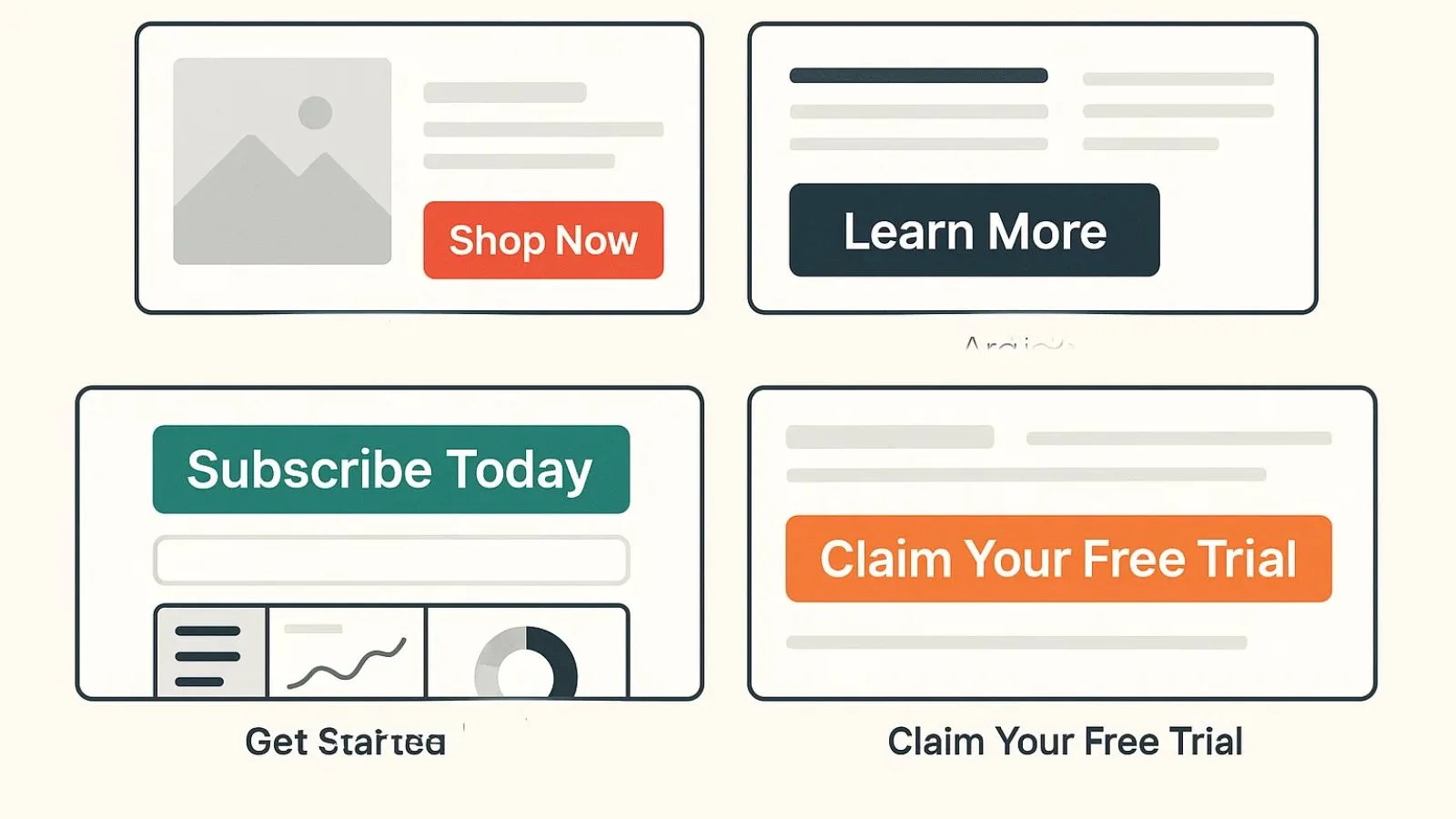
Your website is often the first place people interact with your brand, and your CTAs act like road signs guiding them toward their next step. The best call to action examples for websites are simple, direct, and tailored to what the visitor wants at that exact moment.
Here are some tried-and-true website CTAs you’ve probably seen in action:
- “Shop Now” – A classic for e-commerce sites, nudging visitors to browse and buy.
- “Learn More” – Great for service-based businesses, blogs, or product detail pages.
- “Subscribe Today” – Ideal for email marketing sign-ups and newsletters.
- “Get Started” – A versatile CTA for SaaS tools, online courses, or membership sites.
- “Claim Your Free Trial” – Perfect when you want to reduce hesitation and attract first-time users.
Call to Action Button Examples
The design of your CTA matters just as much as the words. Button-based CTAs grab attention and guide clicks more effectively than plain text links. Here are a few call to action button examples that often deliver strong results:
- “Buy Now” with a bold contrasting color.
- “Try for Free” with a softer, welcoming look.
- “See Plans & Pricing” for SaaS or subscription-based businesses.
- “Join the Community” to encourage connection and engagement.
Well-placed, eye-catching buttons not only tell users what to do but also make it easy to take that step instantly.
Social Media Call to Action Examples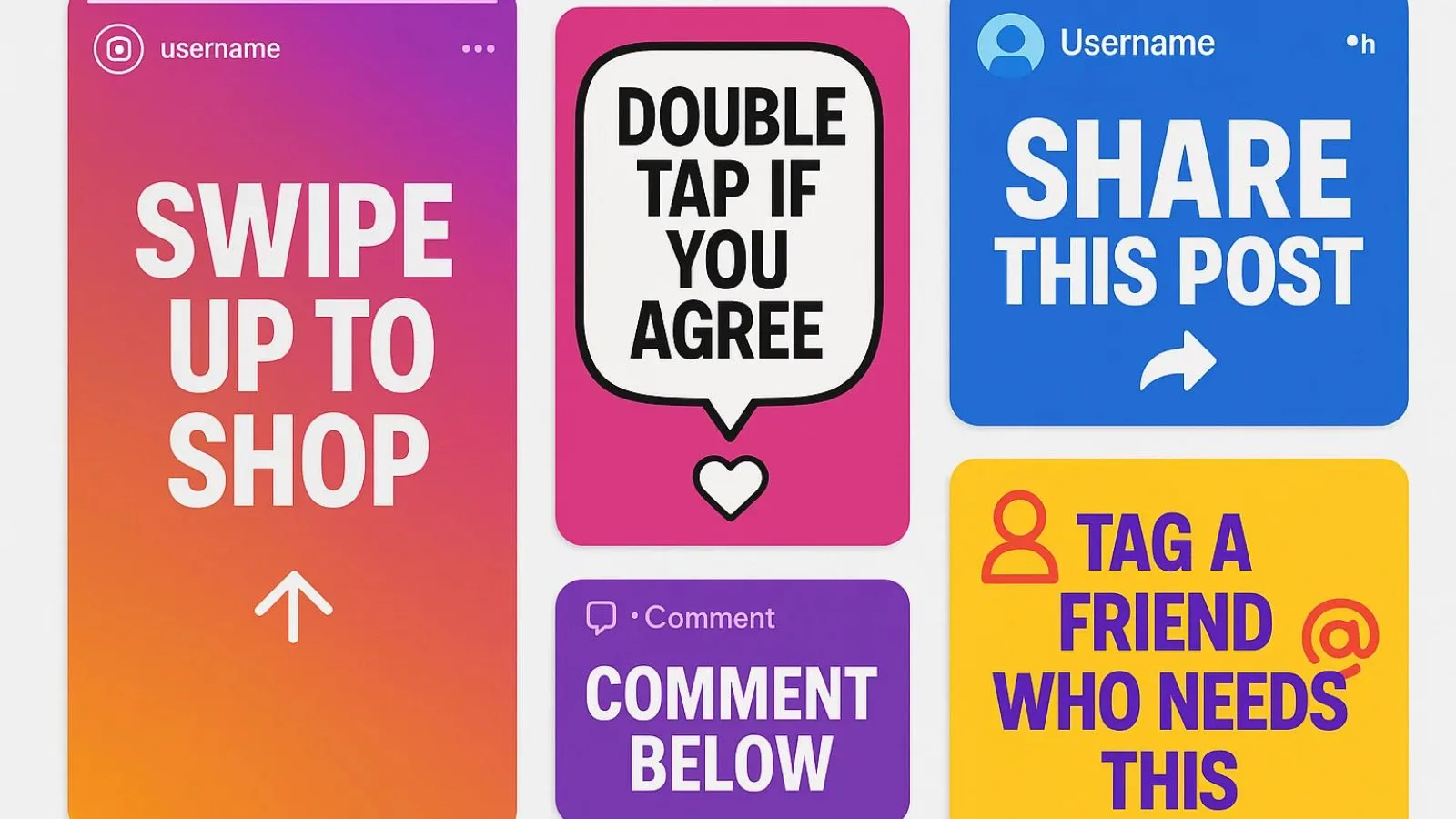
Social media thrives on quick interactions, so your CTAs need to be short, engaging, and easy to act on. Unlike websites where users might spend minutes browsing, people scroll through feeds in seconds. That’s why the most effective call to action examples on social media feel natural and conversational.
Here are some strong social media call to action examples you can adapt for different platforms:
- “Swipe Up to Shop” – Popular on Instagram Stories, it takes users directly to your product or landing page.
- “Tag a Friend Who Needs This” – Encourages shares and expands reach organically.
- “Double Tap if You Agree” – A playful way to boost engagement on Instagram.
- “Comment Below” – Great for sparking conversations, feedback, or discussions.
- “Share This Post” – Works well for thought-leadership or informative content on LinkedIn or Facebook.
The beauty of these CTAs is that they don’t feel pushy. Instead, they encourage quick actions that help your content spread further while keeping audiences engaged. The best examples of call to action on social platforms combine creativity with clarity.
Call To Action In Advertising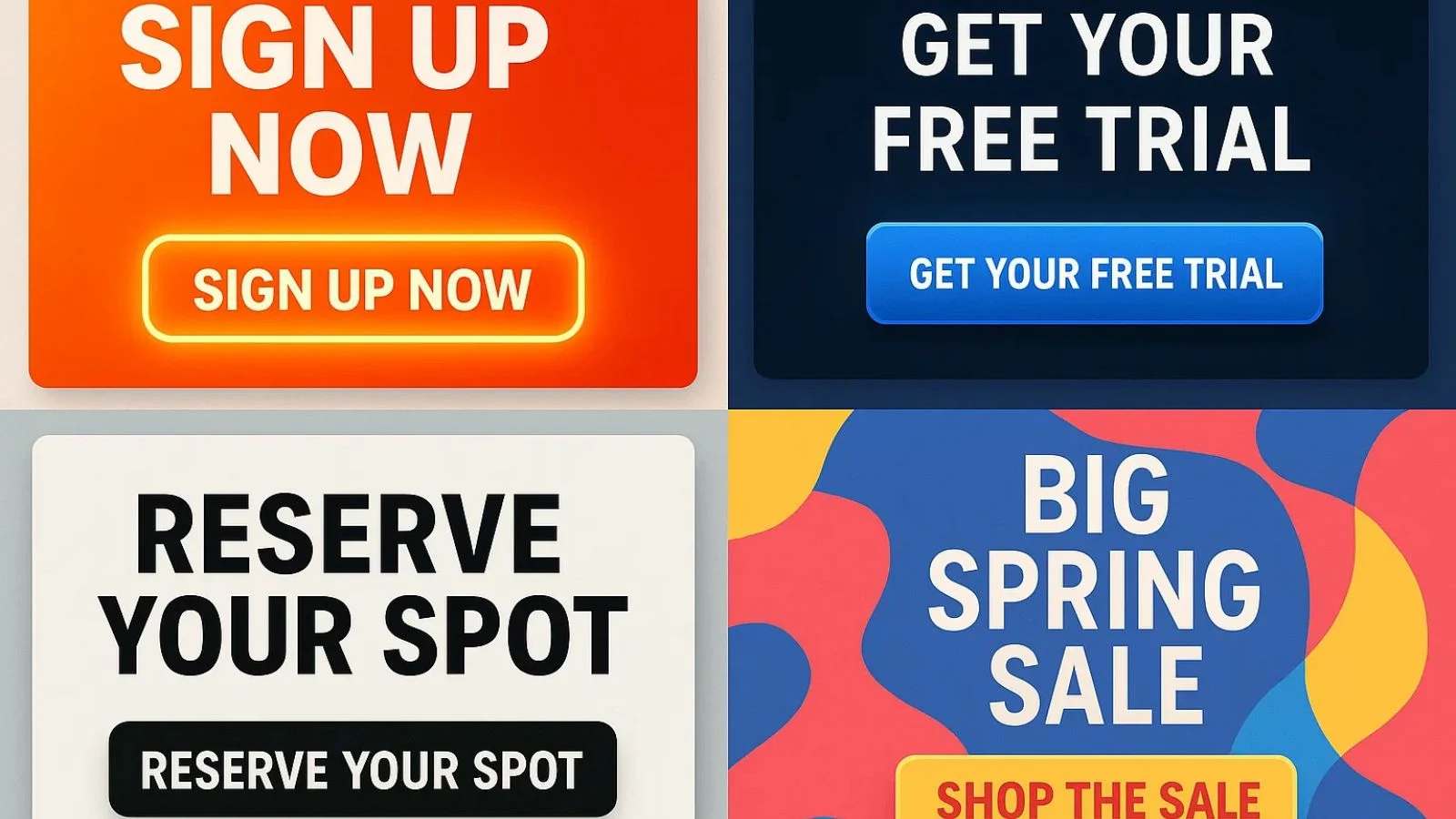
When it comes to ads, CTAs can make or break your campaign. A well-crafted CTA grabs attention and converts curiosity into clicks. The best-performing call to action examples in advertising are short, persuasive, and leave no doubt about the next step.
Here are some popular choices you’ll often see in ad campaigns:
- “Sign Up Now” – Works well for newsletters, webinars, and subscription services.
- “Get Your Free Trial” – A proven favorite for SaaS and digital tools.
- “Reserve Your Spot” – Creates urgency for events, workshops, or limited seats.
- “Shop the Sale” – Perfect during seasonal campaigns or flash sales.
Advertisers often test variations of these CTAs to see which drives the best performance. Tools like an ad spy tool or ad intelligence software can help you peek at what’s working for competitors and inspire ideas for your own campaigns. By studying ads that are already converting, you’ll be able to model proven effective call to action examples instead of starting from scratch.
In short, the right CTA in an ad isn’t just about words; it’s about timing, placement, and context.
Advanced CTA Tips & Best Practices
Once you’ve nailed the basics, it’s time to take your CTAs up a notch. The best call to action examples aren’t just clear and clickable, they’re strategic. Understanding the power of CTA button can make all the difference. Here are a few ways to optimize your CTAs for maximum impact:
-
Personalization
Generic CTAs can feel flat. Instead of “Download Now,” try “Download Your Free Guide.” Adding a personal touch makes users feel the action is tailored for them. -
A/B Testing
Even small tweaks can lead to big wins. Test different button colors, placements, or wording like “Get Started” vs. “Start Your Journey.” This helps uncover the most effective call to action examples for your audience. -
Context Matters
Match your CTA to the content around it. On a blog, “Read More” works better than “Buy Now.” On a sales page, “Claim Your Offer” is stronger than “Learn More.” -
Keep It Short
Long-winded CTAs often lose attention. Aim for 2–5 words that cut straight to the point. -
Make It Visible
Your CTA should stand out without being overwhelming. Use whitespace, contrast, or bold buttons to make it easy for users to find. -
Use Power Words
Words like Free, Instant, Exclusive, Limited, or Today can give your CTAs that extra push. The best examples of call to action combine urgency with value.
By leveraging the power of CTA button with these refinements, you can transform ordinary CTAs into conversion magnets.
PowerAdSpy: Discover What Works In Real Ads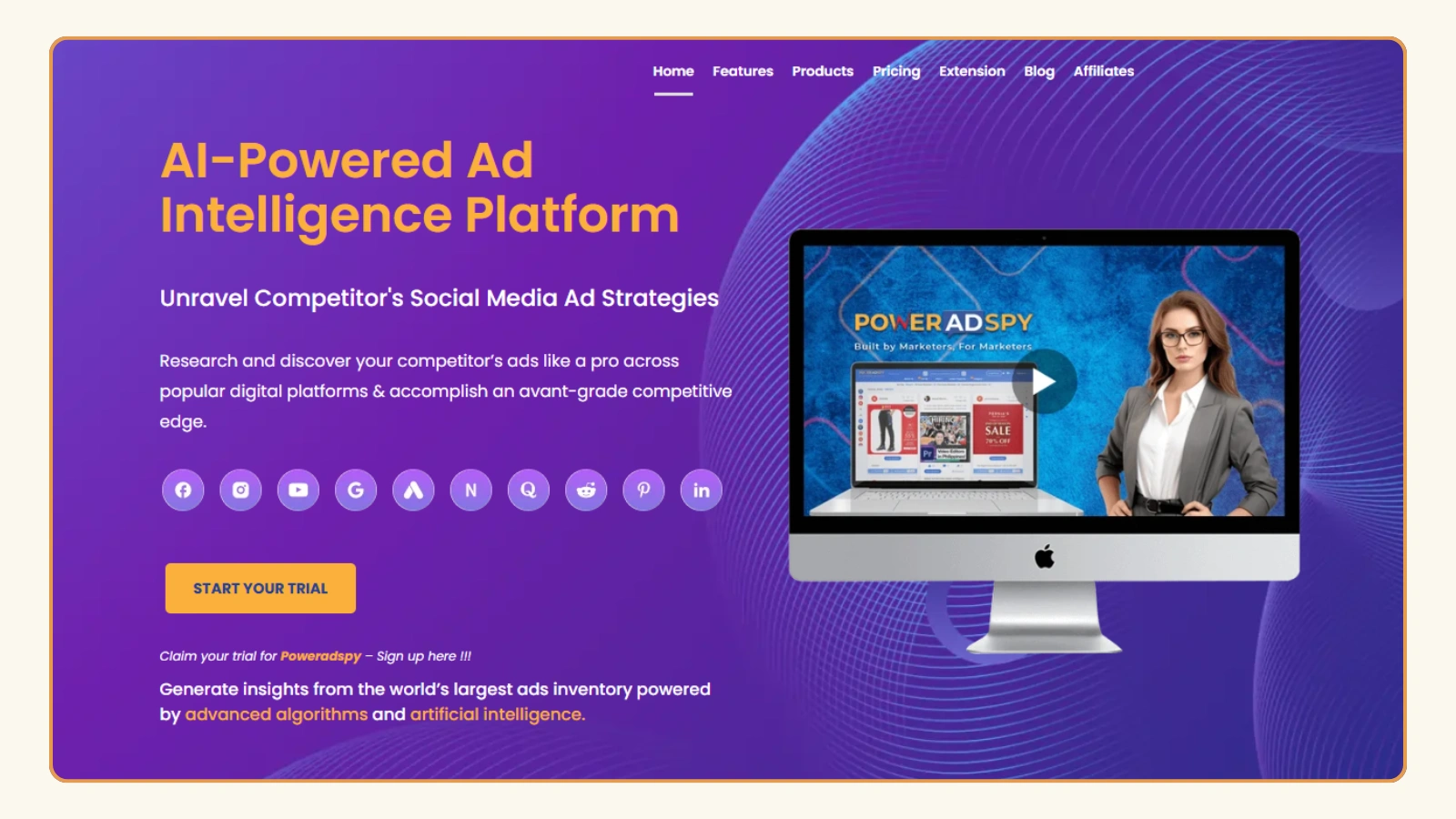
Crafting CTAs isn’t just about creativity; it’s about knowing what actually converts. That’s where PowerAdSpy comes in. This powerful ad intelligence software lets you peek behind the curtain and see which call to action examples are working in real-world campaigns.
With PowerAdSpy, you can:
- 🔎 Analyze Competitor Ads – Find out what kinds of CTAs your competitors are using successfully.
- 📊 Track Engagement – See which ads are driving clicks, shares, and conversions.
- 🌍 Explore Multiple Platforms – From Facebook to Instagram to YouTube, learn what CTAs perform best across channels.
- 💡 Spot Trends Early – Get inspired by high-performing ads before they become mainstream.
Instead of guessing what CTA might work, you can model proven approaches by using an ads spy tool like PowerAdSpy. It’s like having a shortcut to the most effective call to action examples tested and validated in the wild.
If you want to create CTAs that don’t just look good but actually deliver results, PowerAdSpy is your go-to companion.
Measuring CTA Effectiveness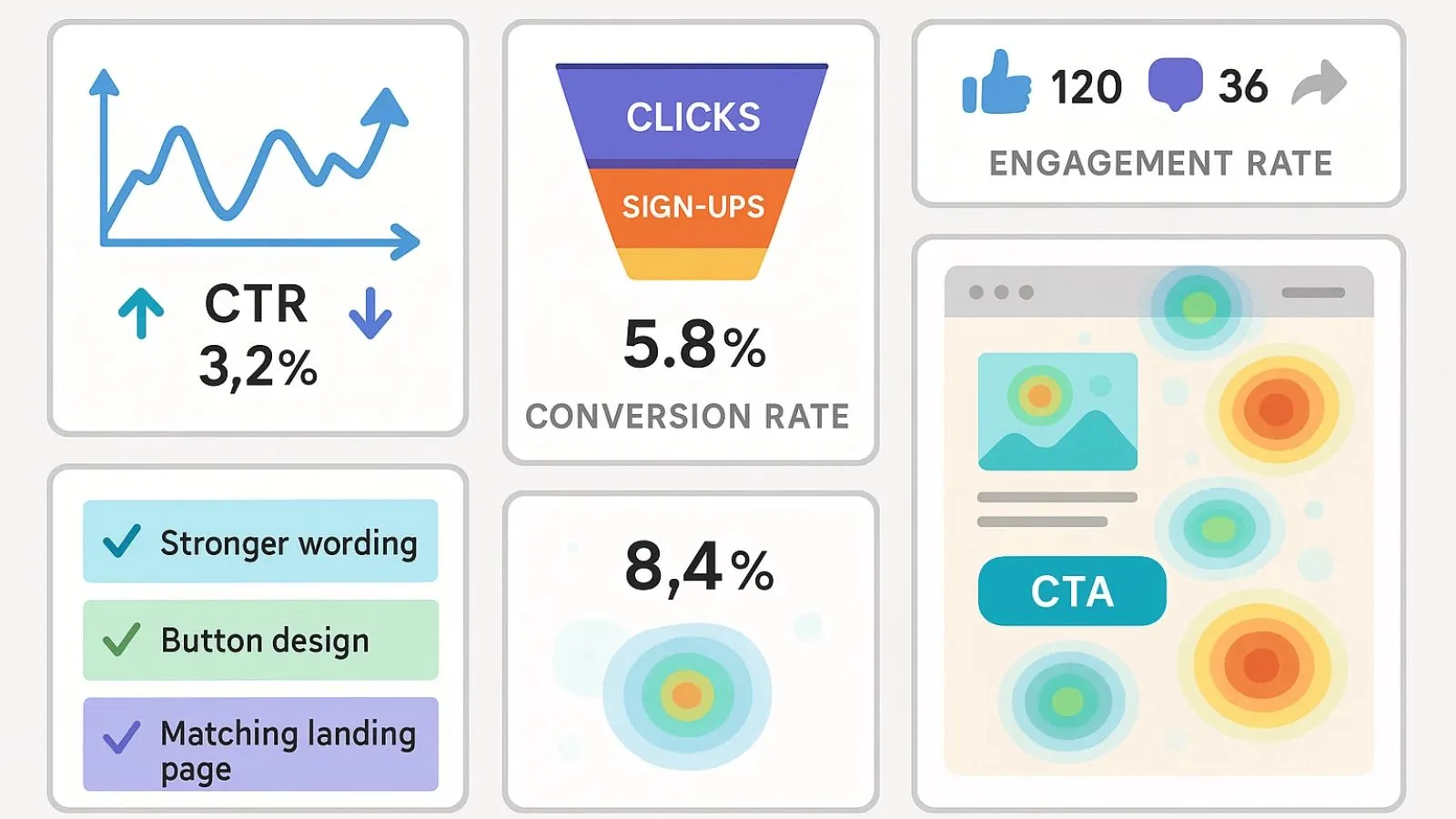
Having a strong CTA is one thing; knowing if it’s actually working is another. The smartest marketers don’t just create call to action examples and leave them untouched. They track, measure, and refine to squeeze out better results.
Here are key metrics to keep an eye on:
- Click-Through Rate (CTR): How many people clicked your CTA compared to how many saw it. A low CTR might mean the wording or placement needs tweaking.
- Conversion Rate: Of the people who clicked, how many completed the desired action (purchase, sign-up, download, etc.).
- Engagement Rate: Especially important for social media call to action examples—likes, shares, and comments show how your audience responds.
- Heatmaps & Scroll Depth: These tools show if people even see your CTA or if it’s buried too far down a page.
How to Improve Based on Data?
- If CTR is low, → Try stronger action words or more visible button designs.
- If conversions are low → Your landing page may not match the promise of the CTA.
- If engagement is weak, → Rethink context or make CTAs more conversational.
The takeaway: don’t just launch a CTA and hope. Treat your examples of call to action like experiments, refine based on results, and keep testing for improvements.
Also Read,
Conclusion
At the end of the day, CTAs are more than just buttons or phrases; they’re the bridge between attention and action. The best call to action examples are clear, direct, and designed with the audience in mind. From websites to ads to social platforms, every click-worthy CTA shares one common trait: it tells people exactly what to do next.
We’ve explored different styles, from playful social media call to action examples to high-converting ad CTAs, and even advanced strategies like personalization and A/B testing. The key is to keep experimenting until you find what resonates with your audience.
And if you’d rather not rely on guesswork, tools like PowerAdSpy give you insider access to what’s already working in the market. By learning from proven ads and effective call to action examples, you’ll save time and increase your chances of creating CTAs that convert.
The real magic happens when you stop seeing CTAs as an afterthought and start treating them as the heartbeat of your marketing. Every button, every phrase, every nudge, it all adds up to more clicks, more sign-ups, and more growth.
FAQs
Q1. What makes a call to action effective?
A: An effective CTA is clear, action-oriented, and aligned with your audience’s needs. Strong CTAs use persuasive words, create urgency, and guide users toward a single action like “Get Started Free” or “Shop Now.”
Q2. How many call to action examples should I use on a page?
A: It depends on the page goal. Landing pages usually focus on one main CTA to avoid distraction, while blogs or product pages can include multiple CTAs strategically placed throughout the content.
Q3. Can I use the same call to action across all my campaigns?
A: Reusing CTAs is common, but tailoring them to specific offers, audiences, or platforms makes them more powerful. For instance, social media call to action examples might be shorter and punchier than website CTAs.

